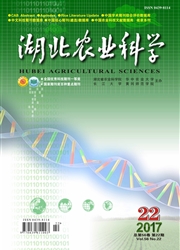

 中文摘要:
中文摘要:
依据地统计理论和方法,采取小支撑多样点的空间取样设计,在干扰强度不同的两个华北落叶松林分中设置样地,对云杉更新幼苗的空间格局进行了定量比较研究。结果表明,在干扰强度较小的样地1,云杉更新幼苗密度较大(每公顷634.8株),异质性程度较高(Cn+C=0.88219),格局变异呈现随机性变异特征。在干扰较大的样地2,云杉幼苗密度较小(每公顷214.8株),异质性程度较低(C0+C=0.3036)、且主要体现在相对较小的尺度范围内(0.5~22.6m),空间自相关变异占95.6%,随机因素对空间格局的影响较小。两样地之间云杉幼苗表现的尺度范围、强度及空间结构等有显著差异,林分空间异质性是导致这种差异的主要原因。
 英文摘要:
英文摘要:
The spatial regeneration pattern of the Picea wolsonii was studied in the two plots of different disturbance intensity according to the spatial sampling method and design. Sequence analysis indicated that, in the slightly disturbed forest the seedling regeneration intensity was much higher (634.8 seedings per ha), regeneration patterns were of significantly spatial heterogeneity (0.882 19). In the intensely disturbed forest (plot2), the seedling regeneration intensity was much lower (214.8 seedings per ha), the patterns of seedling regeneration were relatively simple (0.303 6), regeneration patterns were of significantly spatially heterogeneity (95.6%) in relatively small scale (0.5-22.6 m). Scale range, intensity and spatial structure of regeneration pattern in each plot differed significantly. The spatial heterogeneity of the woodland was the main factor of influrencing the results.
 同期刊论文项目
同期刊论文项目
 同项目期刊论文
同项目期刊论文
 期刊信息
期刊信息
